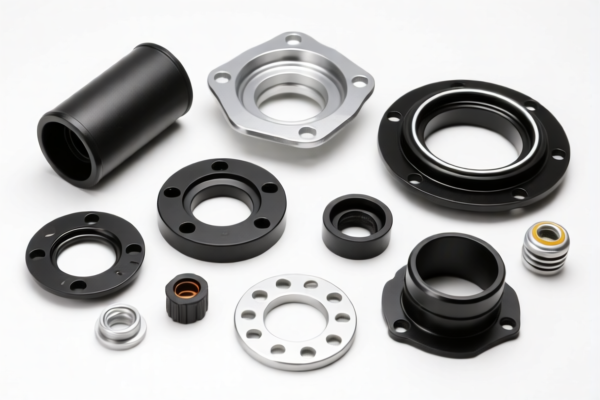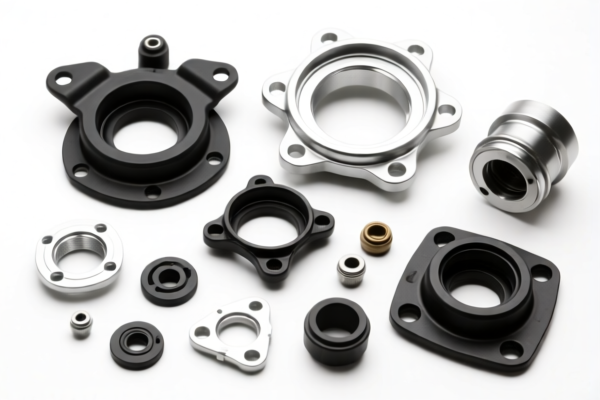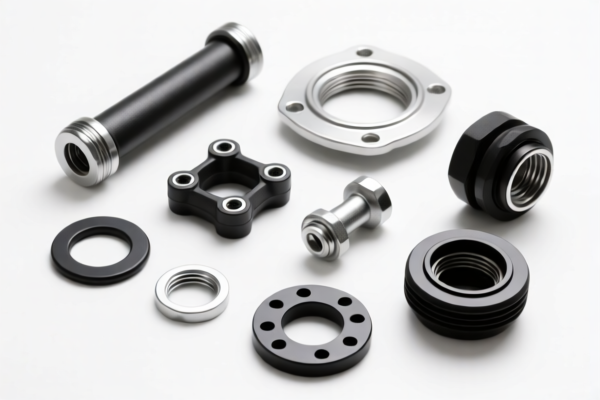| HS Code | Official Doc | Tariff Rate | Origin | Destination | Effective Date |
|---|---|---|---|---|---|
| 8543708000 | Doc | 55.0% | CN | US | 2025-05-12 |
| 8543906800 | Doc | 55.0% | CN | US | 2025-05-12 |
| 8503009000 | Doc | 55.0% | CN | US | 2025-05-12 |
| 8479899560 | Doc | 32.5% | CN | US | 2025-05-12 |
| 8479899560 | Doc | 32.5% | CN | US | 2025-05-12 |
| 8487900080 | Doc | 83.9% | CN | US | 2025-05-12 |
| 8487900040 | Doc | 58.9% | CN | US | 2025-05-12 |




Turbine Controller
A turbine controller is a device that regulates the speed and operation of a turbine, ensuring stable and efficient power generation or mechanical drive. These controllers are critical components in power plants, industrial facilities, and various other applications utilizing turbine technology.
Material
Turbine controllers utilize a range of materials selected for durability, precision, and the operating environment. Common materials include:
- Steel Alloys: For robust structural components, gears, and housings, offering high strength and resistance to wear.
- Aluminum Alloys: Used for lighter components where weight is a concern, often in housing and control panels.
- Electronic Components: Silicon-based semiconductors for processing, sensors, and communication.
- Plastics & Composites: Employed for insulation, enclosures, and certain sensor housings.
- Hydraulic Fluids: Specialized oils and fluids for hydraulic actuation systems.
Purpose
The primary purposes of a turbine controller are to:
- Speed Control: Maintain the turbine's rotational speed at a desired setpoint, regardless of load fluctuations.
- Load Control: Regulate the amount of power output or mechanical work produced by the turbine.
- Stability: Prevent overspeed conditions, protect against damage from sudden load changes, and ensure smooth operation.
- Efficiency Optimization: Maximize the turbine’s performance by adjusting operating parameters.
- Safety: Implement protective functions to shut down the turbine in case of faults or abnormal conditions.
Function
Turbine controllers achieve their purpose through a combination of sensors, actuators, and control algorithms. Key functional components include:
- Sensors: Measure parameters such as turbine speed, steam/gas pressure, temperature, and load. Common sensor types include speed sensors (tachometers, encoders), pressure transducers, thermocouples, and current/voltage sensors.
- Actuators: Control the flow of working fluid (steam, gas, water) to the turbine or adjust inlet guide vanes. Common actuator types include hydraulic cylinders, electric motors, and steam admission valves.
- Control Unit: Processes sensor data using sophisticated algorithms (often PID control or more advanced model-based control) to determine the appropriate actuator commands. This unit can be analog, digital, or a combination of both. Modern controllers often utilize Programmable Logic Controllers (PLCs) or dedicated control systems.
- Protection Systems: Monitor critical parameters and initiate shutdown sequences in case of faults such as overspeed, overtemperature, or low oil pressure.
- Communication Interfaces: Allow for remote monitoring, control, and data logging via protocols such as Modbus, Profibus, or Ethernet.
Usage Scenarios
Turbine controllers are employed in a wide range of applications:
- Power Generation: Fossil fuel power plants (coal, oil, natural gas), nuclear power plants, hydroelectric power plants, geothermal power plants, and combined cycle power plants.
- Industrial Processes: Chemical plants, refineries, paper mills, and other facilities utilizing steam or gas turbines for mechanical drive or cogeneration.
- Marine Propulsion: Shipboard turbines for powering propulsion systems and auxiliary equipment.
- Aviation: Aircraft engines utilizing turbine controllers for thrust control and engine management.
- Oil and Gas Industry: Gas turbine driven compressors and pumps for pipeline transmission and processing.
Common Types
Turbine controllers can be categorized based on their control method and technology:
- Mechanical Controllers: Older designs utilizing flyweights, governors, and hydraulic linkages for speed control. Less precise and slower response compared to electronic controllers.
- Electro-Mechanical Controllers: Combine mechanical elements with electrical amplification and control circuitry.
- Electronic Controllers: Utilize microprocessors, sensors, and actuators for precise speed and load control. These are the most common type in modern applications. Subtypes include:
- Programmable Logic Controllers (PLCs): Versatile controllers widely used for turbine control due to their flexibility and reliability.
- Dedicated Turbine Control Systems: Specialized control systems designed specifically for turbine applications, offering advanced features and optimized performance.
- Digital Electro-Hydraulic Controllers (DEHC): Utilize digital control signals to manage hydraulic actuators, providing precise and responsive control.
- Gas Turbine Controllers (GTC): Specifically designed for gas turbines, incorporating features for fuel control, ignition, and exhaust gas monitoring.
- Steam Turbine Controllers (STC): Optimized for steam turbines, managing steam admission, valve positioning, and condensate control.
Based on the provided information, the following HS codes may be relevant to “turbine controller”:
- 8543708000: This code covers electrical machines and apparatus having individual functions, not specified or included elsewhere in this chapter; parts thereof: Other machines and apparatus: Other: Microwave amplifiers. While not a direct match, a controller could fall under “other machines and apparatus” if it utilizes microwave technology. The total tax rate is 55.0%, comprised of a 0.0% base tariff, a 25.0% additional tariff, and a 30.0% additional tariff effective after April 2, 2025.
- 8543906800: This code covers electrical machines and apparatus, having individual functions, not specified or included elsewhere in this chapter; parts thereof: Parts: Other: Printed circuit assemblies: Other. If the turbine controller consists of printed circuit assemblies, this HS code may be applicable. The total tax rate is 55.0%, comprised of a 0.0% base tariff, a 25.0% additional tariff, and a 30.0% additional tariff effective after April 2, 2025.
- 8479899560: This code covers machines and mechanical appliances having individual functions, not specified or included elsewhere in this chapter; parts thereof: Other machines and mechanical appliances: Other: Other Automotive maintenance machines. If the turbine controller is used for automotive maintenance, this HS code may be applicable. The total tax rate is 32.5%, comprised of a 2.5% base tariff and a 0.0% additional tariff, increasing to 30.0% additional tariff effective after April 2, 2025.
According to the provided reference material, the HS code options related to 'turbine controller' are limited, with only the following 3 found.
It is important to note that HS code 8479899560 is listed twice in the reference material, with identical information.
Customer Reviews
No reviews yet.